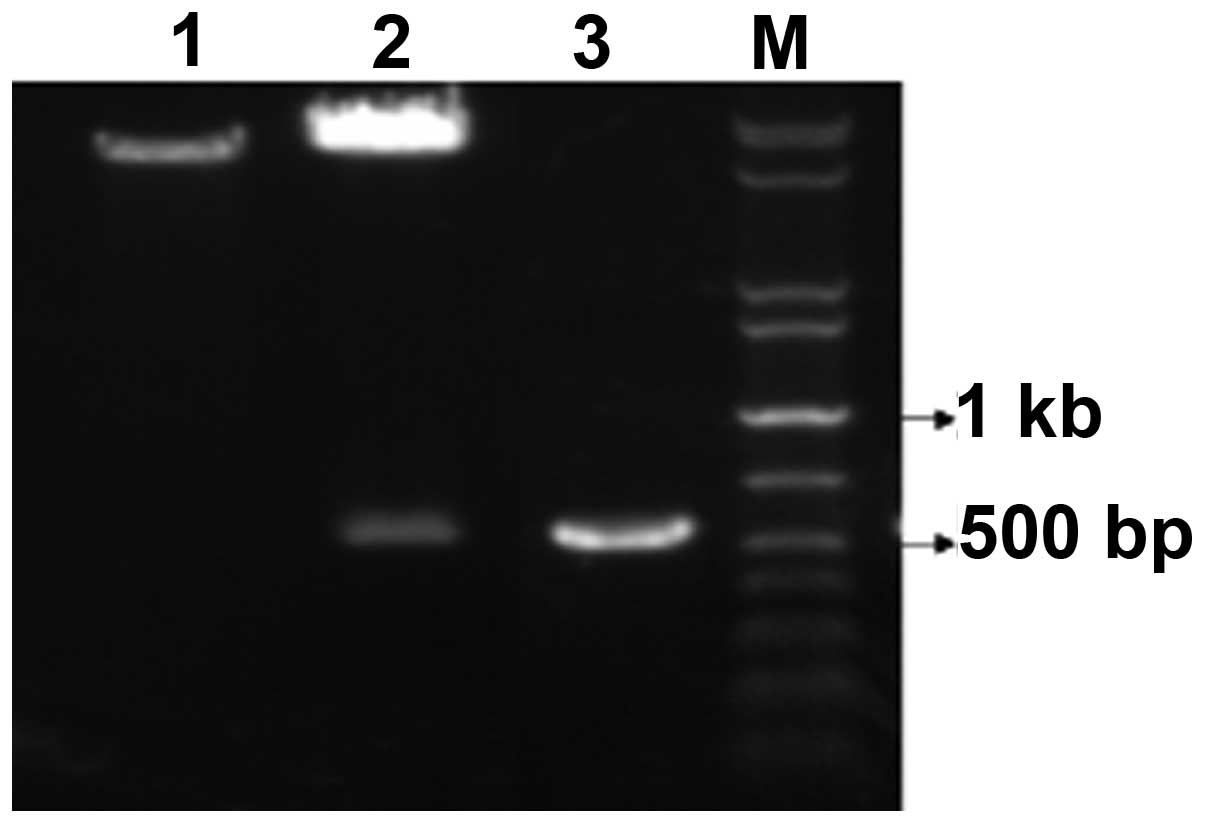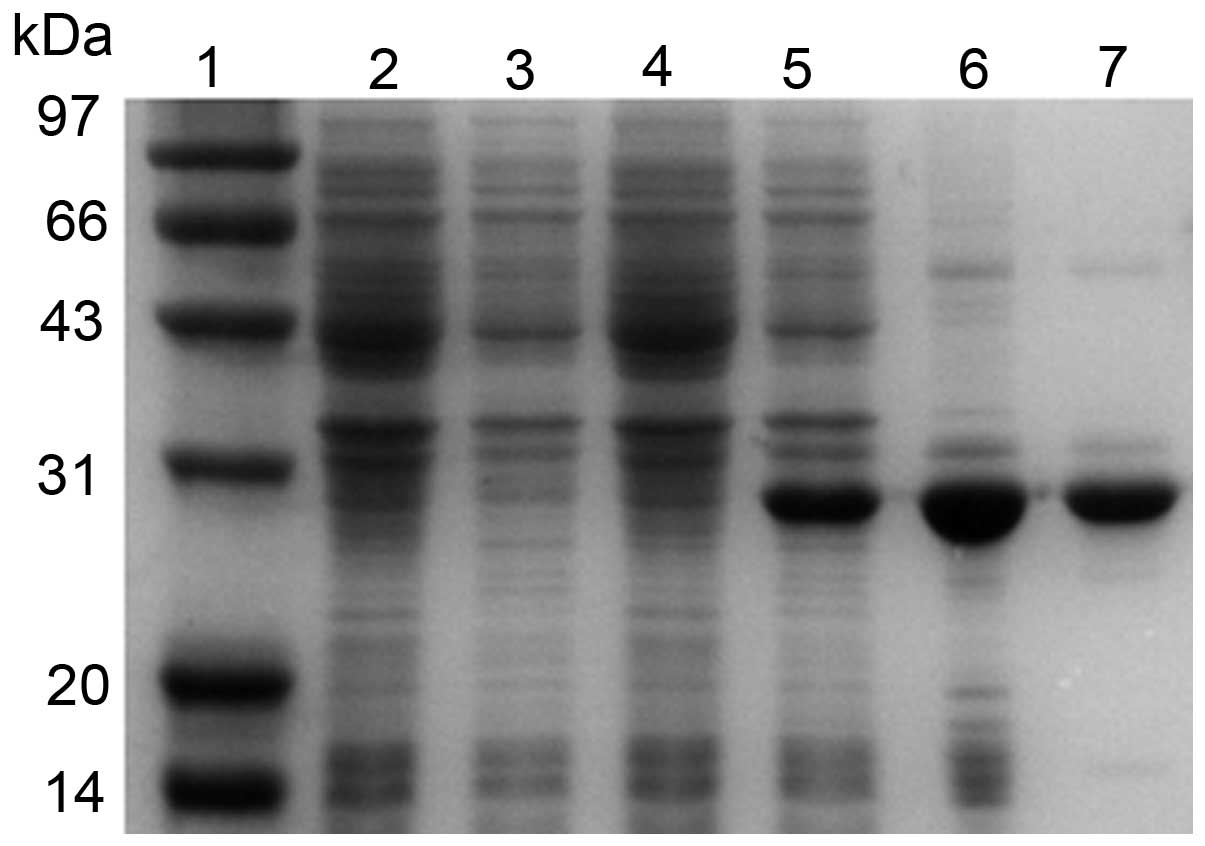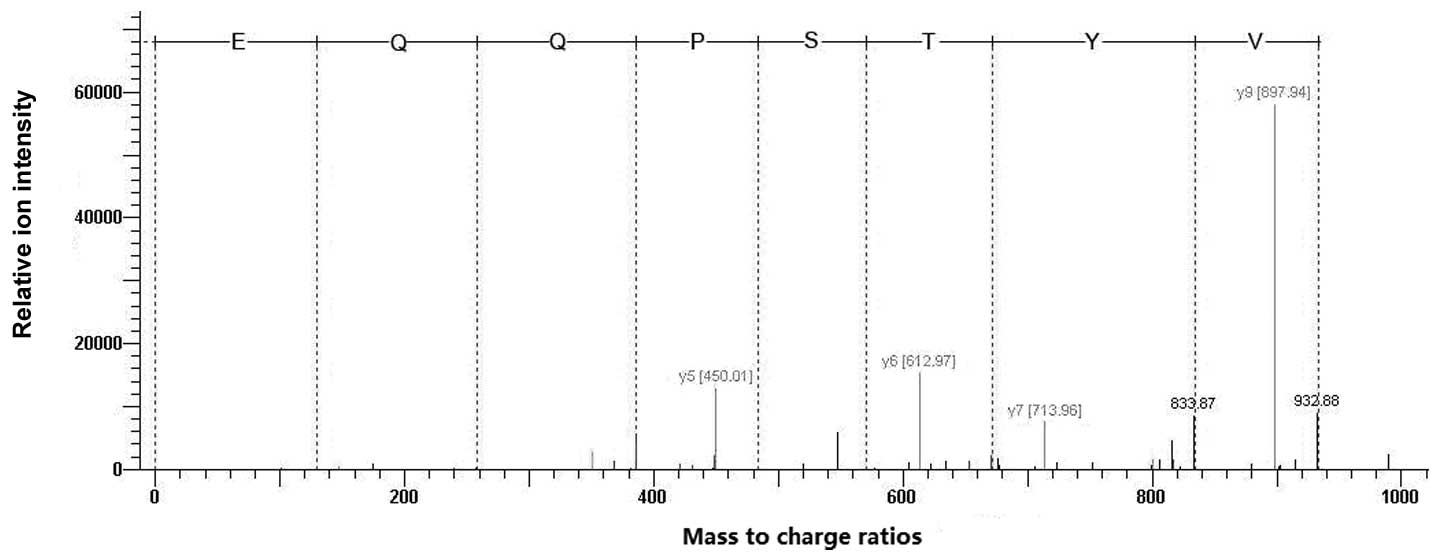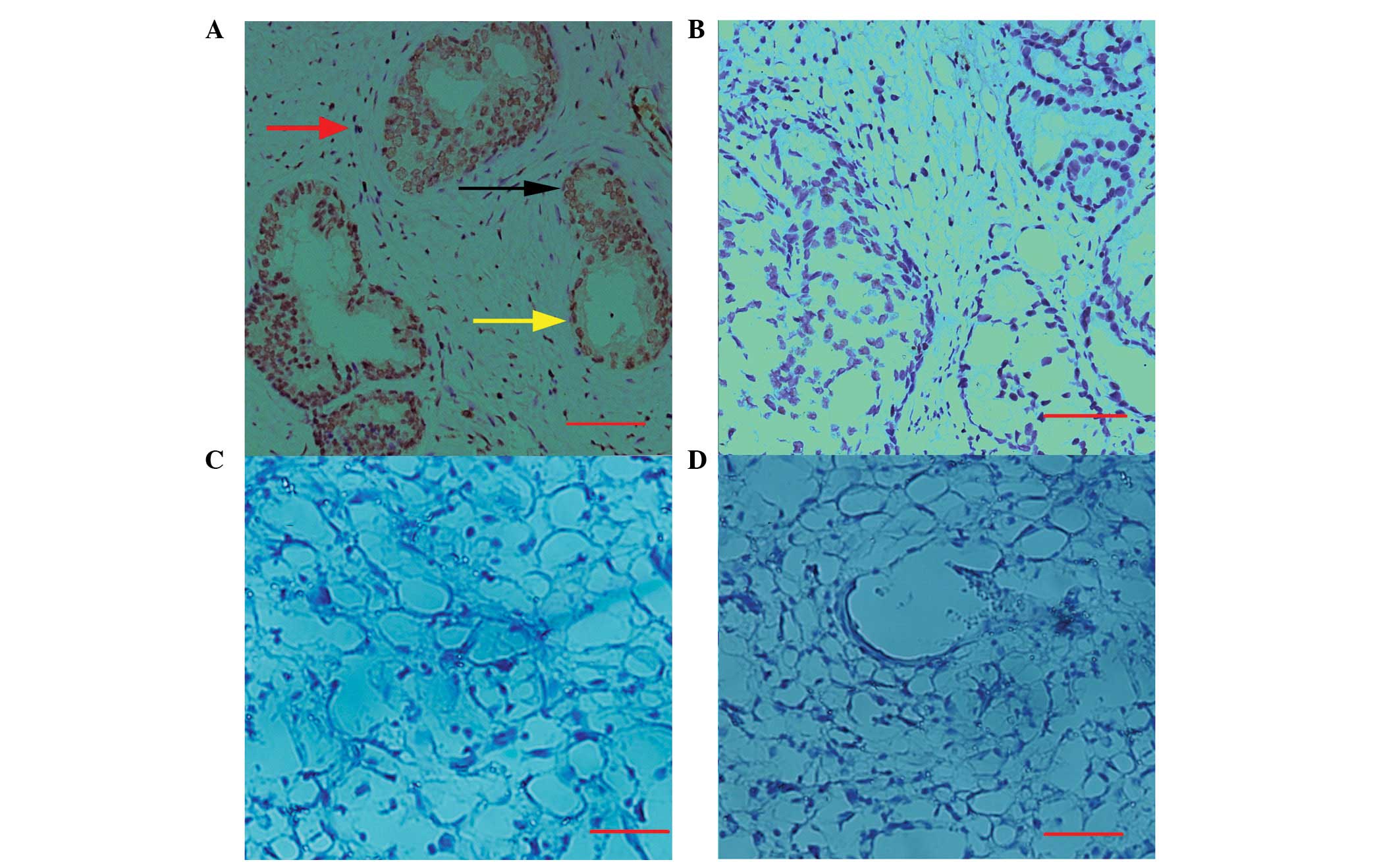Generation and characterization of a polyclonal antibody against human high mobility group box 4
- Authors:
- Fen Yang
- Runsheng Li
- Aizhen Hong
- Fei Duan
- Yuhua Li
View Affiliations
Affiliations: Shanghai Medical College, Fudan University, Shanghai 200032, P.R. China, Key Laboratory of Contraceptive Drugs and Devices of NPFPC, Shanghai Institute of Planned Parenthood Research, Shanghai 200032, P.R. China
- Published online on: September 24, 2013 https://doi.org/10.3892/mmr.2013.1701
-
Pages:
1460-1464
Metrics: Total
Views: 0 (Spandidos Publications: | PMC Statistics: )
Metrics: Total PDF Downloads: 0 (Spandidos Publications: | PMC Statistics: )
This article is mentioned in:
Abstract
A human high mobility group box 4 (hHMGB4) expression construct (pET‑28a/hHMGB4) was generated by cloning the hHMGB4 full‑length cDNA in the expression vector pET‑28a(+). The hHMGB4 fusion protein with His6‑Tag was prepared using E.coli BL21 (DE3) transformed with pET‑28a/hHMGB4 and purified via preparative SDS‑PAGE plus electroelution. Immunization of rabbits with the purified hHMGB4 generated polyclonal antibodies. The titer of the antiserum was determined to be 1:102,400 by ELISA analysis. Western blotting analysis showed that the antibody specifically recognized the recombinant hHMGB4 protein and also the endogenous hHMGB4 protein in prostate cancer cells. In addition, immunohistochemical staining analysis using the prepared antibody revealed marked hHMGB4 staining in the nuclei of the human prostate tissue. These data demonstrate that the anti‑hHMGB4 polyclonal antibody may be a useful reagent for the functional study of hHMGB4.
View References
|
1
|
Ueda T and Yoshida M: HMGB proteins and
transcriptional regulation. Biochim Biophys Acta. 1799:114–118.
2010. View Article : Google Scholar : PubMed/NCBI
|
|
2
|
Knapp S, Müller S, Digilio G, et al: The
long acidic tail of high mobility group box 1 (HMGB1) protein forms
an extended and flexible structure that interacts with specific
residues within and between the HMG boxes. Biochemistry.
43:11992–11997. 2004. View Article : Google Scholar : PubMed/NCBI
|
|
3
|
Stros M: HMGB proteins: interactions with
DNA and chromatin. Biochim Biophys Acta. 1799:101–113. 2010.
View Article : Google Scholar : PubMed/NCBI
|
|
4
|
Agresti A and Bianchi ME: HMGB proteins
and gene expression. Curr Opin Genet Dev. 13:170–178. 2003.
View Article : Google Scholar
|
|
5
|
Müller S, Ronfani L and Bianchi ME:
Regulated expression and subcellular localization of HMGB1, a
chromatin protein with a cytokine function. J Intern Med.
255:332–343. 2004.PubMed/NCBI
|
|
6
|
Ronfani L, Ferraguti M, Croci L, et al:
Reduced fertility and spermatogenesis defects in mice lacking
chromosomal protein Hmgb2. Development. 128:1265–1273.
2001.PubMed/NCBI
|
|
7
|
Nemeth MJ, Curtis DJ, Kirby MR, et al:
Hmgb3: an HMG-box family member expressed in primitive
hematopoietic cells that inhibits myeloid and B-cell
differentiation. Blood. 102:1298–1306. 2003. View Article : Google Scholar : PubMed/NCBI
|
|
8
|
Catena R, Escoffier E, Caron C, et al:
HMGB4, a novel member of the HMGB family, is preferentially
expressed in the mouse testis and localizes to the basal pole of
elongating spermatids. Biol Reprod. 80:358–366. 2009. View Article : Google Scholar : PubMed/NCBI
|
|
9
|
Kou G, Shi S, Wang H, et al: Preparation
and characterization of recombinant protein ScFv(CD11c)-TRP2 for
tumor therapy from inclusion bodies in Escherichia coli.
Protein Expr Purif. 52:131–138. 2007. View Article : Google Scholar : PubMed/NCBI
|
|
10
|
Carlsson N, Borde A, Wölfel S, et al:
Quantification of protein concentration by the Bradford method in
the presence of pharmaceutical polymers. Anal Biochem. 411:116–121.
2011. View Article : Google Scholar : PubMed/NCBI
|
|
11
|
Kuniyasu H, Chihara Y, Kondo H, et al:
Amphoterin induction in prostatic stromal cells by androgen
deprivation is associated with metastatic prostate cancer. Oncol
Rep. 10:1863–1868. 2003.PubMed/NCBI
|














